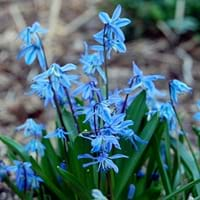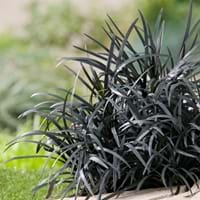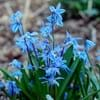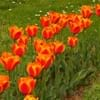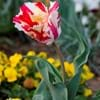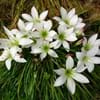Life Span
Perennial
Perennial
Type
Bulb or Corm or Tuber
Perennial
Origin
Russia/Siberia, Western Asia
China, Japan, Korea
Types
Not Available
Not Available
Habitat
gardens, Moist Soils, open Woodlands, Roadsides
Damp shady woods, foothill woods, Lowland
USDA Hardiness Zone
5-8
7-10
Sunset Zone
21,22
H1, H2, 5, 6, 7, 8, 9, 14, 15, 16, 17, 18, 19, 20, 21, 22, 23, 24
Habit
Clump-Forming
Clump-Forming
Flower Color
Blue
White, Lavender
Flower Color Modifier
Bicolor
Bicolor
Fruit Color
Green, Brown
Blue Violet
Leaf Color in Spring
Green
Black
Leaf Color in Summer
Light Green
Black
Leaf Color in Fall
Several shades of Green
Gray
Leaf Color in Winter
Light Green
Black
Leaf Shape
Grass like
Grass like
Plant Season
Spring
Spring, Summer, Fall, Winter
Sunlight
Full Sun, Partial Sun
Full Sun, Partial Sun, Partial shade
The pH of Soil
Acidic, Neutral
Acidic, Neutral
Soil Drainage
Well drained
Well drained
Bloom Time
Early Spring
Summer
Tolerances
Drought
Drought
Where to Plant?
Container, Ground, Pot
Ground
How to Plant?
Corms or bulbs, From bulbs, Offsets, Seedlings
Root Division
Plant Maintenance
Medium
Medium
Watering Requirements
Keep the Soil well drained, Requires regular watering
Regular watering during dry periods
In Summer
Lots of watering
Lots of watering
In Spring
Moderate
Moderate
In Winter
Average Water
Average Water
Soil pH
Acidic, Neutral
Acidic, Neutral
Soil Drainage Capacity
Well drained
Well drained
Sun Exposure
Full Sun, Partial Sun
Full Sun, Partial Sun, Partial shade
Pruning
Remove damaged leaves, Remove dead branches, Remove dead leaves
Remove damaged leaves, Remove dead branches, Remove dead leaves
Fertilizers
All-Purpose Liquid Fertilizer
All-Purpose Liquid Fertilizer
Pests and Diseases
Pest Free
Not Available
Plant Tolerance
Drought
Drought
Flower Petal Number
Single
Single
Foliage Texture
Medium
Medium
Foliage Sheen
Glossy
Matte
Attracts
Not Available
Hummingbirds
Allergy
contact allergic dermatitis, poisonous if ingested
Asthma
Aesthetic Uses
Beautification, Cottage Garden, Ground Cover
Borders
Beauty Benefits
Not Available
Not Available
Environmental Uses
Air purification
Air purification
Medicinal Uses
No Medicinal Use
Antipyretic, Antiscrophulatic, Antitussive, Aphrodisiac
Part of Plant Used
Flowers
Root
Other Uses
Not Available
useful as a ground cover
Used As Indoor Plant
Yes
No
Used As Outdoor Plant
Yes
Yes
Garden Design
Mixed Border, Rock Garden / Wall
Container, Edging, Groundcover, Lawns and Turf, Mixed Border, Rock Garden, Wall
Botanical Name
SCILLA siberica
Ophiopogon planiscapus 'Nigrescens'
Common Name
Siberian Squill, Siberian Wood Squill
Black Mondo Grass, black mondo
In Hindi
Scilla siberica
Black Mondo Grass
In German
Sibirischer Blaustern
Mondo Gras Busch
In French
Scille de Sibérie
Black Mondo Grass
In Spanish
siberica Scilla
entre el césped
In Greek
Scilla siberica
Black Mondo Grass
In Portuguese
Scilla siberica
Black Mondo Grass
In Polish
Cebulica syberyjska
Black Mondo Grass
In Latin
Scilla siberica
Black Mondo Grass
Phylum
Tracheophyta
Embryophyta
Class
Magnoliopsida
Liliopsida
Order
Asparagales
Liliales
Family
Asparagaceae
Liliaceae
Clade
Angiosperms, Monocots
Angiosperms, Monocots
Tribe
Not Available
Not Available
Subfamily
Scilloideae
Not Available
Number of Species
Not Available
Difference Between Siberian Squill and Black Mondo Grass
If you are confused whether Siberian Squill or Black Mondo Grass are same, here are some features about those plants to help you choose better. Many people think that these two plants have the same characteristics, but one can see Siberian Squill and Black Mondo Grass Information and learn more about it. Fertilizers required for proper growth of Siberian Squill are All-Purpose Liquid Fertilizer, whereas for Black Mondo Grass fertilizers required are All-Purpose Liquid Fertilizer. Hence, one should know the basic difference between Siberian Squill and Black Mondo Grass if you are planning to have them in your garden to enhance its beauty.
<
Flowering PlantsImportance of Siberian Squill and Black Mondo Grass
Want to have the most appropriate plant for your garden? You might want to know the importance of Siberian Squill and Black Mondo Grass. Basically, these two plants vary in many aspects. Compare Siberian Squill and Black Mondo Grass as they differ in many characteristics such as their life, care, benefits, facts, etc. Every gardener must at least have the slightest clue about the plants he wants to plant in his garden. Compare their benefits, which differ in many ways like facts and uses. The medicinal use of Siberian Squill is No Medicinal Use whereas of Black Mondo Grass is Antipyretic, Antiscrophulatic, Antitussive and Aphrodisiac. Siberian Squill has beauty benefits as follows: Not Available while Black Mondo Grass has beauty benefits as follows: Not Available.
Compare Facts of Siberian Squill vs Black Mondo Grass
How to choose the best garden plant for your garden depending upon its facts? Here garden plant comparison will help you to solve this query. Compare the facts of Siberian Squill vs Black Mondo Grass and know which one to choose. As garden plants have benefits and other uses, allergy is also a major drawback of plants for some people. Allergic reactions of Siberian Squill are contact allergic dermatitis and poisonous if ingested whereas of Black Mondo Grass have Asthma respectively. Having a fruit bearing plant in your garden can be a plus point of your garden. Siberian Squill has no showy fruits and Black Mondo Grass has no showy fruits. Also Siberian Squill is not flowering and Black Mondo Grass is flowering. You can compare Siberian Squill and Black Mondo Grass facts and facts of other plants too.
